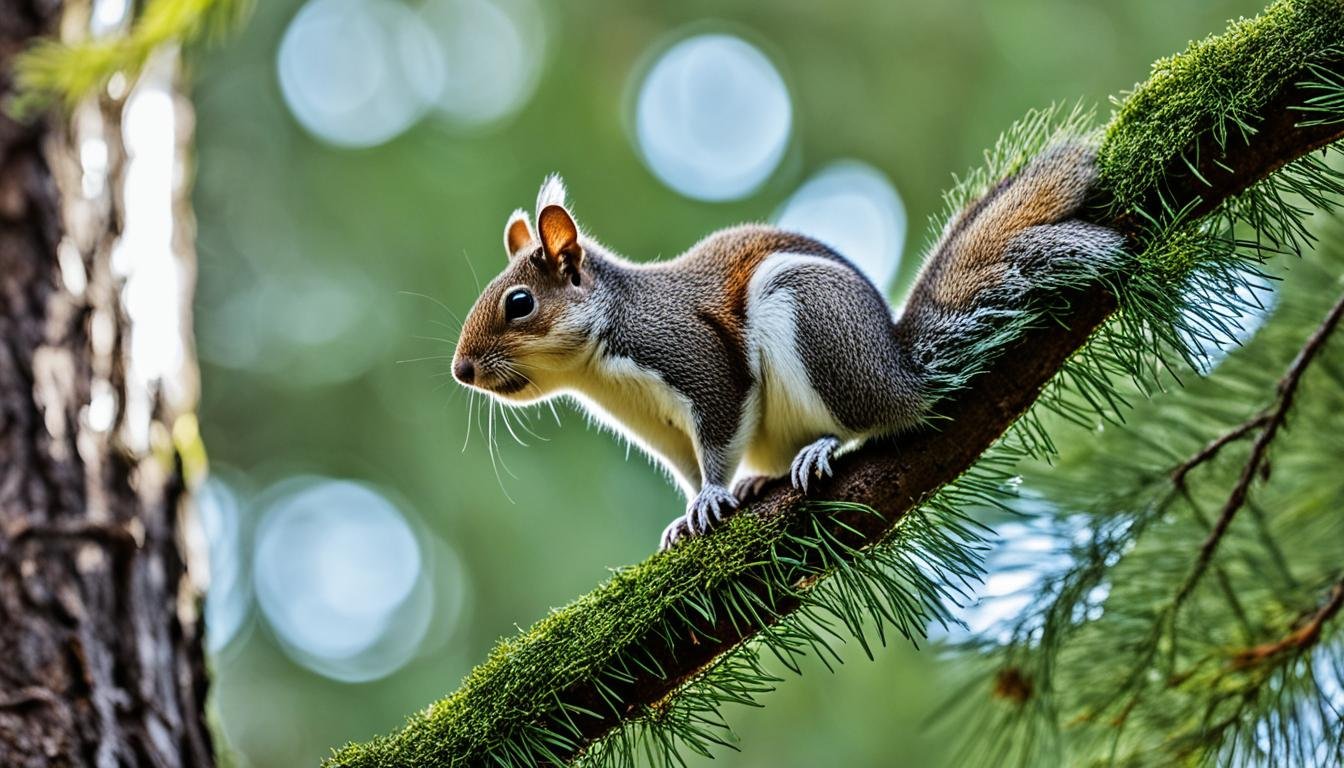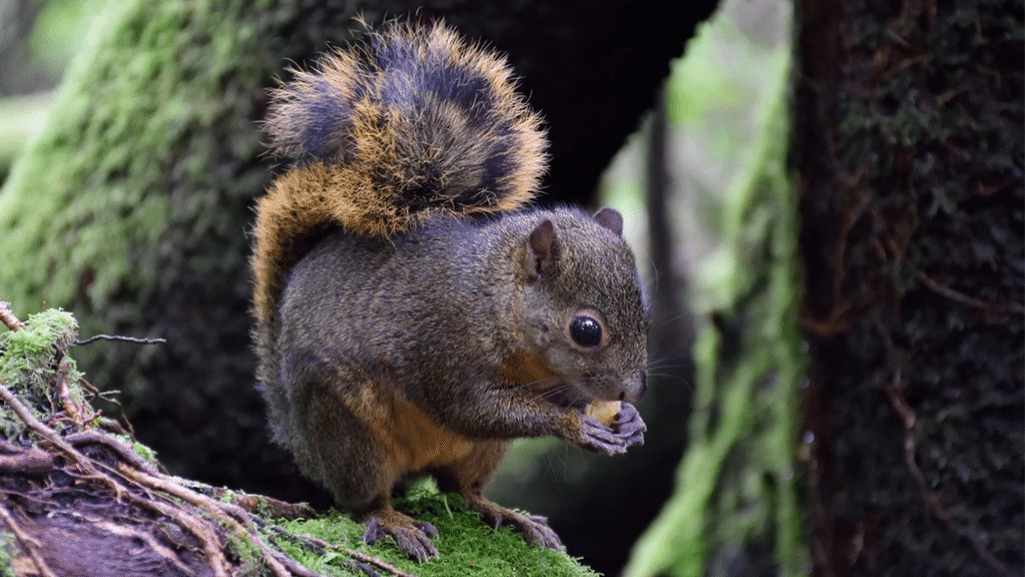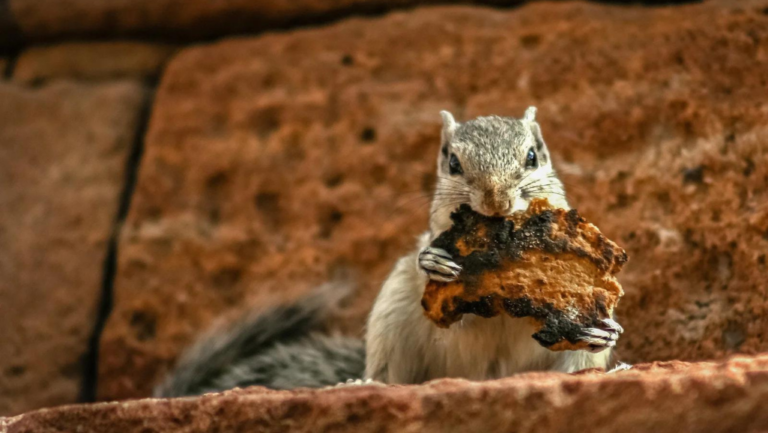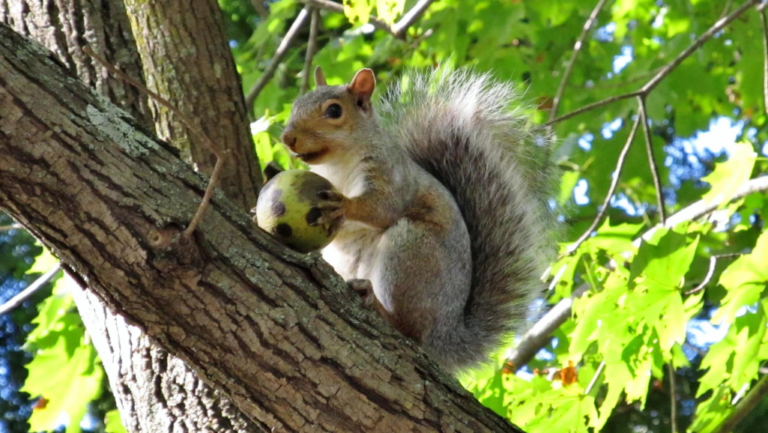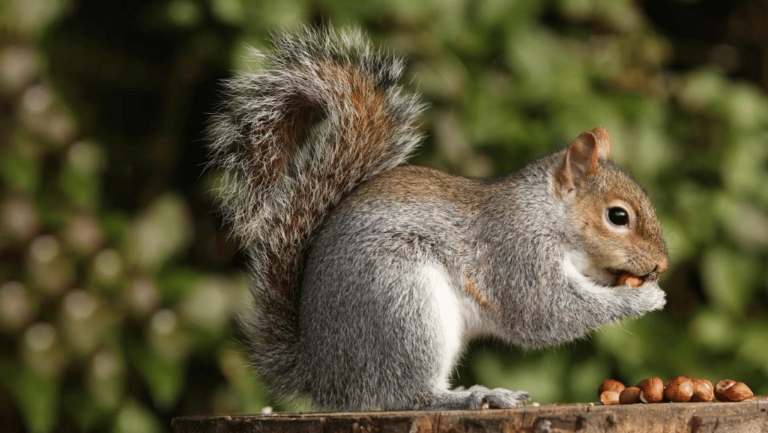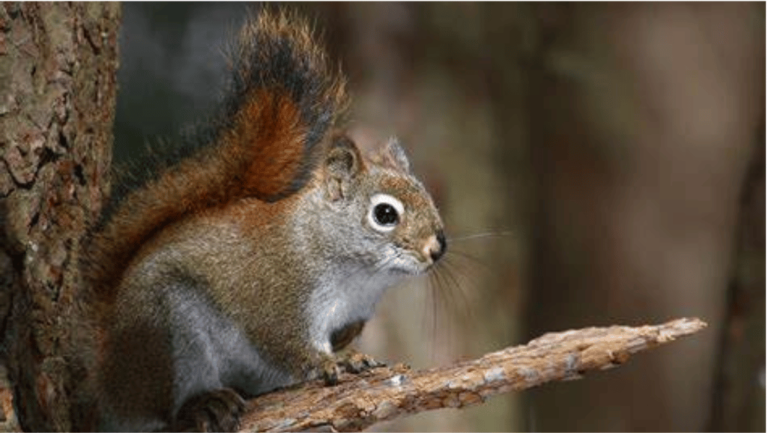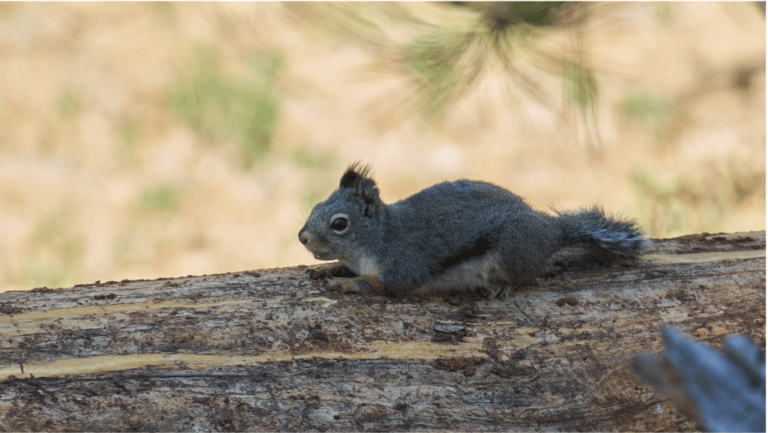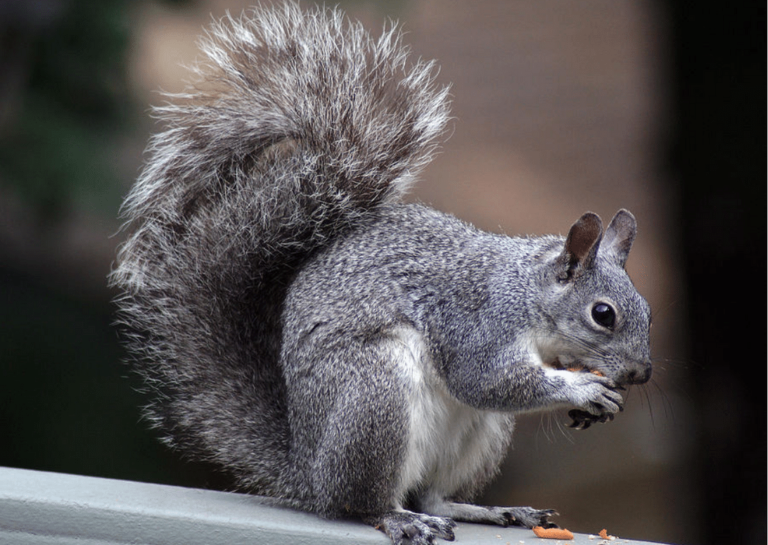The Tufted Pygmy Squirrel, also known as the whitehead’s pygmy squirrel, is a small squirrel species that resides in the tropical rainforests of Southeast Asia. This elusive mammal has adapted to life in the forest canopy ecosystem, making it a fascinating and unique creature within the Southeast Asian biodiversity.
This endangered species can be found in the highland montane forests of Indonesia, Malaysia, and Brunei. Weighing up to .88 ounce and measuring up to 3.3 inches in length, plus an additional 2.6-inch long tail, the Tufted Pygmy Squirrel is a truly small and delicate creature. Despite its size, it thrives in the forest canopy, navigating through the treetops with agility and grace.
The Tufted Pygmy Squirrel’s habitat emphasizes its role as a tropical rainforest dweller. It primarily feeds on mosses, lichens, and tree bark, showcasing its ability to adapt and survive in its environment. However, this elusive squirrel species faces numerous threats, including habitat loss due to deforestation, which puts its survival at risk.
Key Takeaways:
- The Tufted Pygmy Squirrel is a small mammal species thriving in the tropical rainforests of Southeast Asia.
- It is an endangered species due to habitat loss and deforestation.
- The Tufted Pygmy Squirrel resides in the forest canopy ecosystem, adapting to life high above the forest floor.
- Its diet primarily consists of mosses, lichens, and tree bark.
- Conservation efforts are crucial to protect the species and preserve Southeast Asian biodiversity.
Habitat and Distribution of the Tufted Pygmy Squirrel
The Tufted Pygmy Squirrel is primarily found in the highland montane forests of Indonesia, Malaysia, and Brunei. These Southeast Asian forests provide the ideal habitat for this small squirrel species, with their abundant tree population and forest canopy ecosystem. The squirrels are well adapted to life in the trees, and they can be spotted at elevations of up to 9,843 feet. However, their habitat is currently being threatened due to deforestation and habitat loss.
Deforestation in Southeast Asian forests poses a significant risk to the Tufted Pygmy Squirrel. As their natural habitat is destroyed, these unique creatures face the challenge of finding suitable new homes. The loss of forest cover deprives them of essential resources and disrupts the delicate balance of their ecosystem. It also increases their vulnerability to predators and reduces their chances of survival. Conservation efforts are crucial to protect the Tufted Pygmy Squirrel and preserve the biodiversity of Southeast Asian forests.
Tufted Pygmy Squirrel Habitat Comparison
| Location | Key Features |
|---|---|
| Indonesia | Rich biodiversity, dense forests, highland montane habitats |
| Malaysia | Montane rainforests, diverse tree species, elevated elevations |
| Brunei | Pristine rainforests, untouched natural landscapes, forest canopies |
The Tufted Pygmy Squirrel’s habitat in Indonesia, Malaysia, and Brunei offers a unique blend of Southeast Asian forests. These forests are characterized by their dense vegetation, abundant tree species, and highland montane habitats. The lush canopies and diverse environments provide the perfect conditions for the Tufted Pygmy Squirrel to thrive.
Physical Characteristics of the Tufted Pygmy Squirrel
The Tufted Pygmy Squirrel is known for its petite size and unique physical features. Let’s explore the size, weight, and lifespan of this fascinating squirrel species.
Size
The Tufted Pygmy Squirrel measures up to 3.3 inches in length, making it one of the smallest squirrel species in the world. In addition to its body length, it has a tail that can grow up to 2.6 inches long.
Weight
Despite its small size, the Tufted Pygmy Squirrel can weigh up to .88 ounce. This lightweight squirrel relies on its agility and nimbleness to navigate its forest habitat.
Lifespan
The Tufted Pygmy Squirrel has a lifespan of up to 6 years. Within this time frame, these creatures experience the joys and challenges of survival in their fragile ecosystem.
To maintain their small size and agility, Tufted Pygmy Squirrels have incisors that never stop growing. Constant gnawing on tough substances helps wear down their teeth, ensuring they can continue to feed on their preferred diet and adapt to their environment.
With their diminutive size and impressive adaptability, the Tufted Pygmy Squirrel is a unique and remarkable mammal that contributes to the rich biodiversity of Southeast Asian forests.
Behavior and Reproduction of the Tufted Pygmy Squirrel

The Tufted Pygmy Squirrel is known for its unique behavior and fascinating reproductive process. Let’s delve into the intricacies of their behavior, communication, mating rituals, gestation period, and the birth of their young.
Behavior and Communication
The Tufted Pygmy Squirrel is a solitary creature, spending most of its life alone in the trees. However, they do engage in communication with their counterparts through various means. They communicate using chirps, scent marking, and tail twitches. These subtle signals convey important messages within their community, helping establish boundaries and facilitate interaction.
Mating Rituals
During the breeding season, female Tufted Pygmy Squirrels release a scent to signal their readiness for mating. This signal triggers a chase by the males, who compete to prove their speed and agility. Only the fastest male is successful in mating with the female, ensuring that the strongest genes are passed on to the next generation.
Gestation Period and Birth
After successful mating, the female Tufted Pygmy Squirrel has a gestation period of up to 6 weeks. During this time, the female prepares a safe nest to give birth to her young. These nests are typically constructed in tree hollows, crevices, or leafy nests built high in the forest canopy.
After the gestation period, the female gives birth to a litter of up to 9 young. These adorable offspring, known as pups, kits, or kittens, are born blind and hairless. The mother takes great care of her young, nursing them and keeping them warm in the nest. As they grow, the young gradually develop fur and open their eyes, exploring their surroundings under the watchful eye of their mother.
The Tufted Pygmy Squirrel exhibits fascinating behavior and has a unique reproductive process. Understanding their behaviors and reproductive strategies provides valuable insights into the lives of these elusive creatures.
Diet and Predators of the Tufted Pygmy Squirrel
The Tufted Pygmy Squirrel has a specialized diet that primarily consists of mosses and lichens. These small squirrel species have adapted to feed on these unique plant species found in their habitat. In addition to mosses and lichens, they also consume tree bark and occasionally other vegetation when necessary. Their diet is well-suited to their arboreal lifestyle, allowing them to forage for food in the forest canopy.
Despite their small size, the Tufted Pygmy Squirrel has several natural predators in its ecosystem. Wild cats, such as the clouded leopard and leopard cat, pose a significant threat to these squirrels. They are also targeted by foxes, weasels, minks, and birds of prey, including owls and hawks. These predators play an essential role in controlling the population of Tufted Pygmy Squirrels and maintaining the delicate balance of the forest ecosystem.
Conclusion
The Tufted Pygmy Squirrel is a rare and elusive squirrel species that calls the tropical rainforests of Southeast Asia its home. As a small mammal, it has adapted to thrive in the forest canopy ecosystem, showcasing its remarkable resilience. Despite its endangered status, the population of Tufted Pygmy Squirrels remains stable and abundant, thanks to dedicated conservation efforts.
However, the future of these magnificent creatures hangs in the balance as their habitat faces increasing threats from deforestation and habitat loss. It is imperative that we prioritize the preservation of the Southeast Asian biodiversity and take proactive steps to safeguard the Tufted Pygmy Squirrel and its fragile ecosystem.
By raising awareness, promoting sustainable practices, and supporting local conservation initiatives, we can make a difference in the continued survival of this unique and important species. Let us come together to protect the Tufted Pygmy Squirrel and preserve the rich biodiversity of Southeast Asia for generations to come.
Frequently Asked Questions
Where can the Tufted Pygmy Squirrel be found?
The Tufted Pygmy Squirrel can be found in the highland montane forests of Indonesia, Malaysia, and Brunei.
What is the size of the Tufted Pygmy Squirrel?
The Tufted Pygmy Squirrel measures up to 3.3 inches in length and weighs up to .88 ounce.
How long is the gestation period for the Tufted Pygmy Squirrel?
The gestation period for female Tufted Pygmy Squirrels is up to 6 weeks.
What do Tufted Pygmy Squirrels eat?
Tufted Pygmy Squirrels primarily eat mosses and lichens, as well as tree bark and other vegetation.
Who preys upon the Tufted Pygmy Squirrel?
Tufted Pygmy Squirrels are preyed upon by wild cats, foxes, weasels, minks, and birds of prey.


